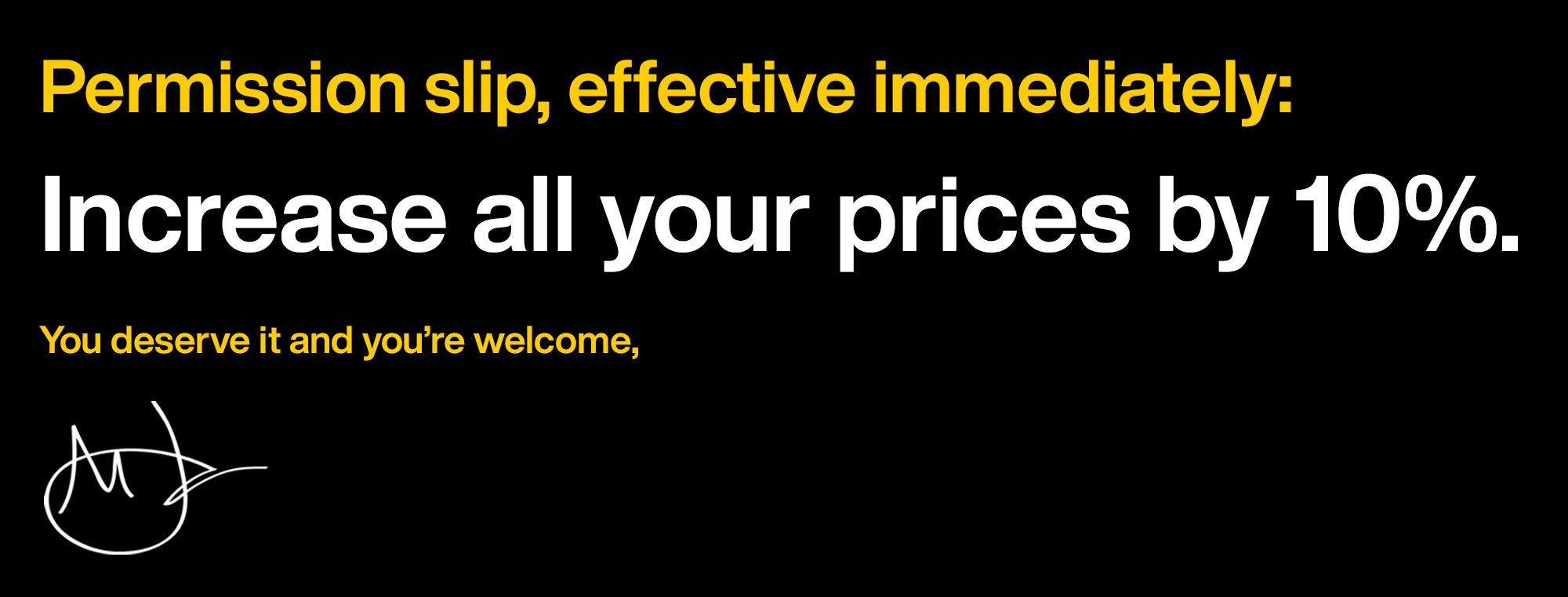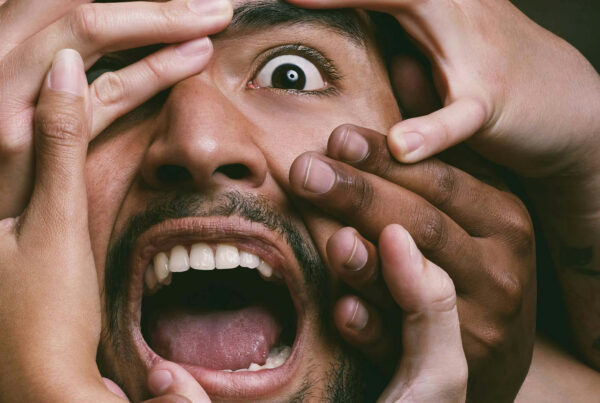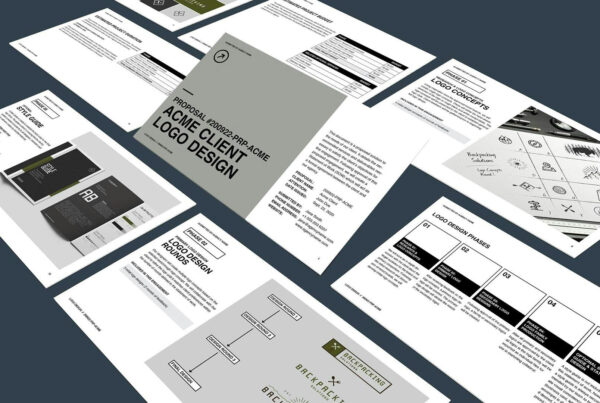Is it time to increase your prices? The short answer, for almost every creative entrepreneur in the world, is “yes.”
- Most creatives are dramatically undercharging for their services based on both market value and the value they create for their clients.
- Most creatives are charging less than their clients are willing to spend.
- Most creatives aren’t tracking their win/loss record to know if they are pushing the price ceiling for their work.
I’ve been there. When I started freelancing I had no understanding of the business value my work created for my clients. I was afraid to bid my projects high because I didn’t want to lose the work (which led to me doing work far below my client’s budgets way too often). I didn’t track my win/loss record to know if I was pushing the price ceiling. And, I’ve coached enough creatives to know that most of you reading this are in this same situation.
As I progressed from freelancer to agency, I was forced to begin pushing up my prices. I had overhead (employees, office space, a fridge full of soda and snack for my team). I could either increase my prices or find myself on the fast road to a failed business. I chose to increase my prices.
Incremental Increases
For me, and most creatives, increasing prices is an incremental process that happens over time (probably of your entire lifespan as a creative entrepreneur). As your value continues to increase so do your prices. Sure, you’ll see thought leaders telling you that you need to immediately jump from $50 logos to $5,000 logos. “Your $50 logo price is damaging the industry,” they may tell you.
But let’s be realistic. If you are currently selling logos to an audience that is wanting to spend $50, you will have an extremely tough time getting them to spend $5,000. The jump from $50 to $5,000 is just too big and requires a wholesale repositioning of your business in the market.
Create Demand, Increase Prices, and Repeat
When it comes to increasing prices, I prefer an incremental approach of creating demand at one price point, increasing prices, then creating demand at the higher price point, then increasing prices, and repeat and repeat and repeat. Let’s look at how this can be done.

Let’s say you currently charge $500 for a logo and have successfully sold many logos at that price point. It is now time to incrementally push up your price point. In this situation, I would recommend charging $650 for all new logo bids that come your way (a 30% increase from your $500 price). You begin charging $650 and you watch the reaction from potential clients. Is there pushback on your price? How are they responding to the $650 price? Are they still saying yes? You’ll know after a few bids whether or not the new incremental increase causes an adverse reaction from your potential clients.
In all likelihood, this incremental increase from $500 to $650 will cause no damage to your project win rate. You’ll be making 30% more on each logo and winning the exact same amount of projects. (However, if you do see a decline in project wins, you can always go back to the $500 price point where you had success before. This won’t happen. I’m just telling you for your own peace of mind.)
Once you have seen sufficient success selling $650 logos, you repeat the process and push your price up another 30% or so (I would push from $650 to $900). Then you follow the same process. Create demand at $900, increase to $1,200, then repeat.
You Must Track It to Know
You should consider these incremental pricing increases as experiments. And what do we do with experiments? We track the results and to make more future experiments (just like 5th grade science class). If you aren’t tracking your proposals in a spreadsheet, the time to start is now. How can you know if you are winning too many proposals or too few if you aren’t tracking the results? You can’t.
The spreadsheet is simple; proposal number, client, project type, the price you proposed, and whether you won or lost the project (and throw in a column for “notes”).

This will give you the data you need to make educated decisions about increasing your prices. What is your project win rate?
If you bid 10 logos at $500 each and you win 8 of the projects, your win rate is 80%. Do the math and know your win rate.
Anything More Than 75% Win Rate and You’re Pricing Too Low
In most situations, if you are winning more than 75% of the projects you propose, then you are likely not charging enough. You don’t want to win every project! It is ok to price some people out! When you start getting resistance about your prices from potential clients, you’ll know you are close to the price ceiling (for your current price points).
If you are winning less than 50% of the projects you propose, you are probably charging too much. You do want people to say “yes” (just not too many of them)! That being said, I would rather see you win 50% of projects at $2,000 then 100% of projects at $1,000. You’ll make the same amount of money doing half the amount of work.
I always felt like the right place to be was somewhere between a 60% and 70% win rate. Not too high. Not too low. (By the way, my 13 year average win rate at my agency was 61%…right in the sweet spot.)
Start tracking your win rate and use it as a guide to tell you if it is time to increase your prices.
Let’s Increase Your Prices Right Now
All this talk about bumping up prices inspires me to challenge you right now. Let’s do this in the least scary way possible with a 10% increase. Effective immediately, EVERY price you currently charge is increased by 10%. I can all but promise you that this will have NO NEGATIVE EFFECT on your win rate.
- A client who says “yes” to you at $50/hour will still say “yes” at $55/hour.
- A client who says “yes” to you at $300 will still say “yes” at $330.
- A client who says “yes” to you at $800 will still say “yes” at $880.
- A client who says “yes” to you at $10,000 will still say “yes” at $11,000.
- A client who says “yes” to you at $25,000 will still say “yes” at $27,500.
This is the start of your incremental price increases. After you get comfortable with these new rates and have tracked the proper win rate, repeat the process and increase your prices again.
P.S. If you want an official permission slip to increase your prices right now, here you go…







